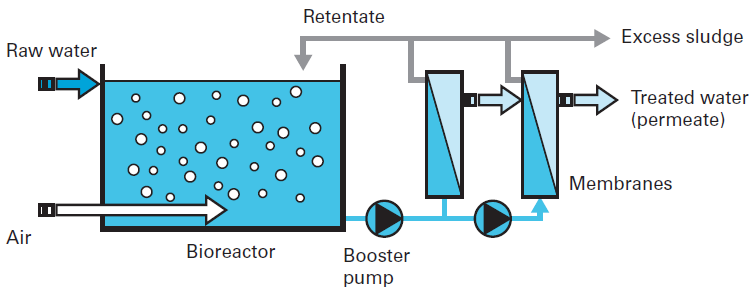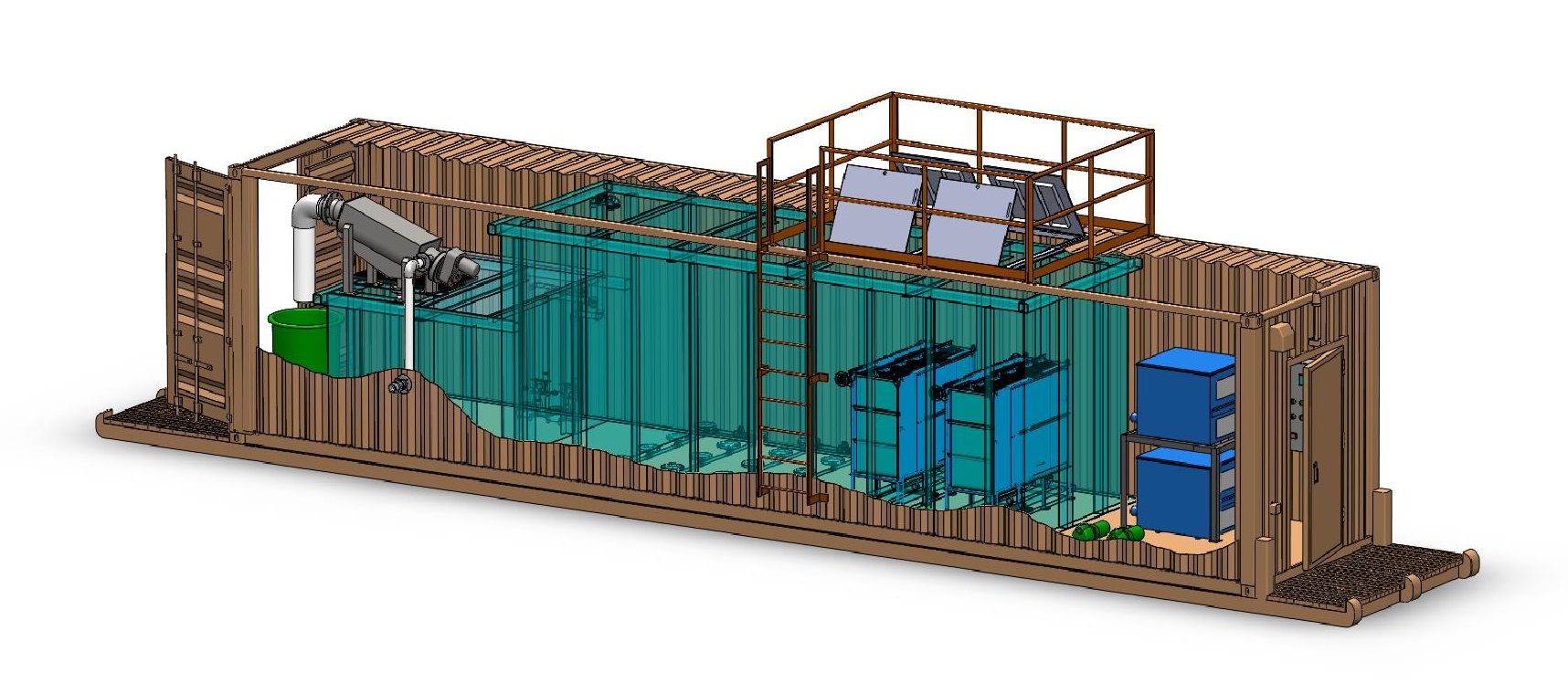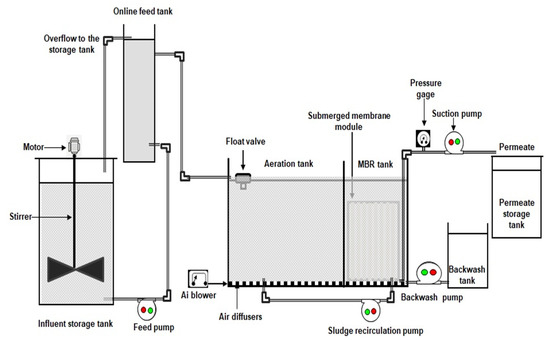How Membrane Bioreactors Are Transforming Water Purification Equipments
The introduction of membrane bioreactors (MBRs) stands for a substantial development in the area of water filtration, merging biological therapy procedures with cutting-edge membrane filtering modern technologies. This integration not only boosts the high quality of treated effluent but additionally addresses urban space constraints, making MBRs specifically appropriate for densely inhabited areas. As international water deficiency magnifies, the role of MBRs in helping with potable water reuse and sustainable water administration ends up being increasingly vital. Yet, the effects of this modern technology extend beyond efficiency-- what difficulties and chances exist ahead for its extensive execution?
Introduction of Membrane Bioreactors
Membrane bioreactors (MBRs) stand for a significant innovation in water purification innovation, as they combine biological treatment procedures with membrane layer filtering. This combination improves the effectiveness of wastewater therapy by using microbes to weaken organic pollutants while concurrently using semi-permeable membranes to separate treated water from suspended pathogens and solids.
The MBR system usually consists of a biological reactor where the microbial population metabolizes pollutants, complied with by a membrane filtering device that keeps biomass and permits only clean water to pass through. This dual performance causes higher effluent quality contrasted to conventional treatment approaches. MBRs can be run in both set and constant flow settings, offering versatility in style and application.
In Addition, MBRs are characterized by their portable impact, making them ideal for metropolitan setups with area restraints. Membrane Bioreactor. They likewise make it possible for the healing of water for reuse, hence adding to water sustainability efforts. While MBR modern technology has actually gotten appeal in commercial and metropolitan applications, its functional intricacies and power demands demand careful factor to consider throughout implementation. In general, MBRs are at the forefront of boosting water treatment efficiency and quality, showcasing the possibility for ingenious services in environmental administration.
Benefits of MBR Modern Technology
The integration of organic treatment with membrane purification offers many advantages for water filtration procedures. Among the key advantages of Membrane Bioreactor (MBR) modern technology is its capacity to successfully remove both inorganic and organic impurities, leading to premium effluent. The membranes function as a physical obstacle, stopping put on hold solids and pathogens from passing through, which enhances the overall safety and security and dependability of treated water.
Additionally, MBR systems call for a smaller sized impact contrasted to conventional treatment methods, permitting extra reliable space use. This small layout is specifically beneficial in urban settings where land is limited. MBRs additionally show functional flexibility, accommodating differing influent high qualities and circulation prices without significant efficiency deterioration.
Moreover, the procedure offers improved nutrient removal abilities, particularly for nitrogen and phosphorus, which are essential for stopping eutrophication in getting waters. The reduced sludge production related to MBR modern technology additionally equates to decrease disposal costs, making it a cost-efficient option in the future - Membrane Bioreactor. On the whole, the benefits of MBR innovation setting it as a leading choice for sustainable and ingenious water purification systems, attending to both ecological and economic problems
Applications in Water Purification
Applications of Membrane Bioreactor (MBR) innovation in water filtration are varied and impactful, resolving different treatment requires throughout several sectors. MBRs effectively incorporate organic treatment procedures with membrane layer filtration, making them optimal for municipal wastewater treatment, commercial effluent management, and even potable water reuse efforts.
In municipal settings, MBRs are progressively utilized to boost the top quality of treated wastewater, enabling conformity with rigorous discharge guidelines and helping with the recycling of water for watering and non-potable uses. Their small style likewise makes them suitable for city settings where room is limited.
Industrially, MBR technology is made use of to deal with procedure water and wastewater, particularly in sectors such as food and beverage, drugs, and textiles. By effectively getting rid of contaminants and put on hold a fantastic read solids, MBRs help sectors decrease environmental effects while recuperating valuable sources from wastewater streams.
Furthermore, MBRs are gaining traction in decentralized water treatment applications, where small systems can be released in remote areas or establishing regions. This adaptability allows communities to achieve lasting water administration services, enhancing accessibility to tidy water while decreasing dependence on typical therapy techniques.
Situation Studies and Success Stories

In an additional example, a textile production facility in Bangladesh adopted MBR modern technology to resolve its wastewater challenges. The system decreased chemical oxygen demand (COD) degrees from 1,200 mg/L to much less than 100 mg/L, thus satisfying regulative criteria and significantly minimizing environmental effect.
The College of Cape Community's MBR setup has actually shown efficient in view website treating greywater for non-potable reuse on campus. This task not just conserves safe and clean water but also serves as an instructional model for sustainable methods.
Moreover, great post to read a fish and shellfish handling plant in Norway made use of MBR innovation to treat effluents having high degrees of raw material, accomplishing over 90% toxin elimination. These study emphasize MBR modern technology's adaptability and its vital duty in enhancing water high quality throughout diverse applications.
Future of Water Treatment Solutions
As worldwide water scarcity and pollution obstacles magnify, innovative water therapy solutions are becoming significantly necessary to ensure lasting accessibility to clean water. The future of water therapy depends on the assimilation of advanced modern technologies that enhance the effectiveness and effectiveness of filtration procedures. Membrane layer bioreactors (MBRs) go to the forefront of this advancement, incorporating biological therapy with membrane layer purification to generate top quality effluent appropriate for various applications.

Arising patterns such as resource recuperation from wastewater, including nutrients and power, will certainly further change therapy centers into eco-friendly hubs. Improvements in nanotechnology and membrane materials promise enhanced performance and durability of filtering systems.

Final Thought
Their duty in drinkable water reuse and lasting water management highlights their relevance in addressing global water deficiency obstacles. Continued research study and advancement will additionally improve the efficiency and fostering of MBR modern technology, ensuring a resilient future for water treatment remedies.
The appearance of membrane bioreactors (MBRs) represents a substantial development in the area of water purification, combining organic therapy procedures with sophisticated membrane layer filtering modern technologies. As worldwide water scarcity escalates, the function of MBRs in assisting in drinkable water reuse and lasting water administration becomes increasingly crucial. They additionally enable the healing of water for reuse, hence contributing to water sustainability efforts.As global water deficiency and pollution obstacles magnify, innovative water therapy solutions are coming to be increasingly important to guarantee lasting access to tidy water. Their role in drinkable water reuse and sustainable water monitoring highlights their significance in resolving international water shortage obstacles.